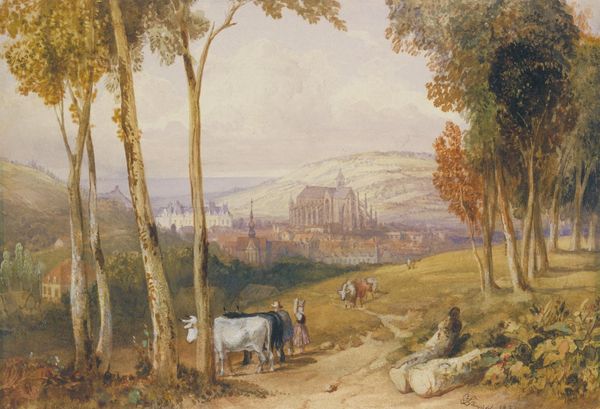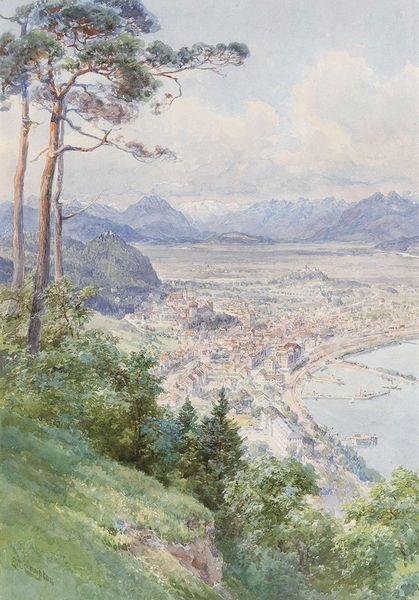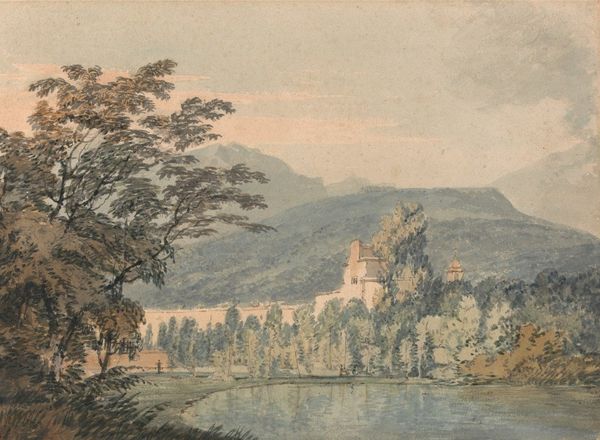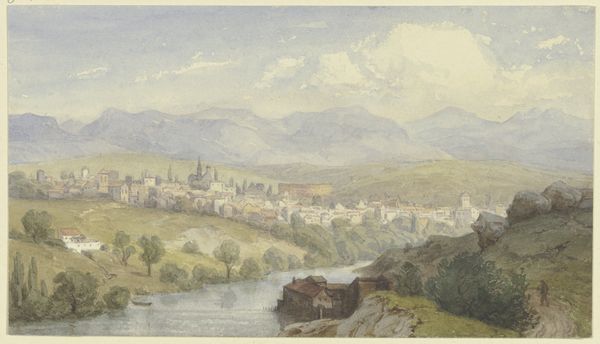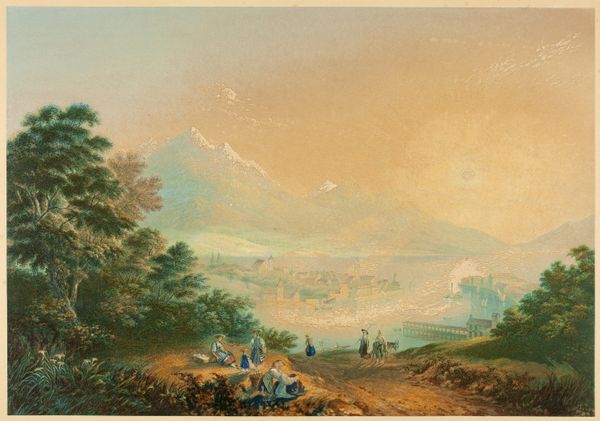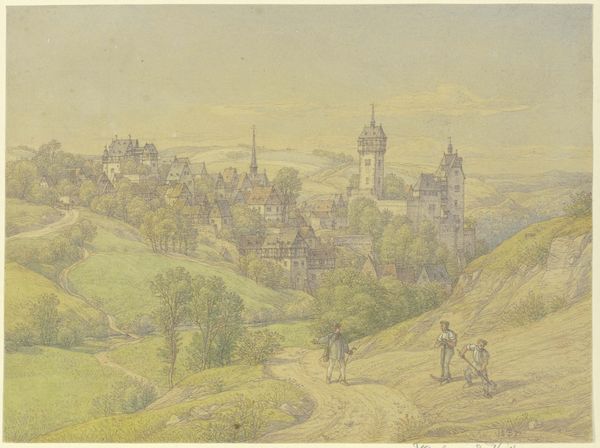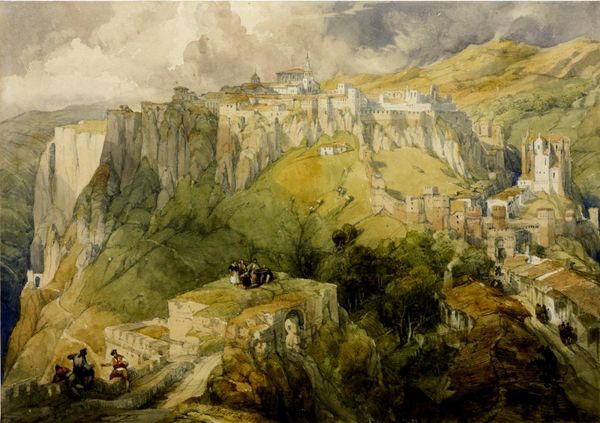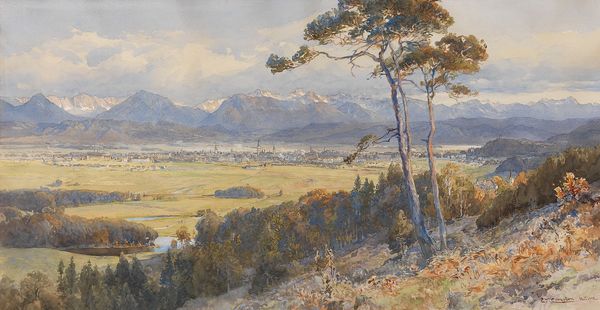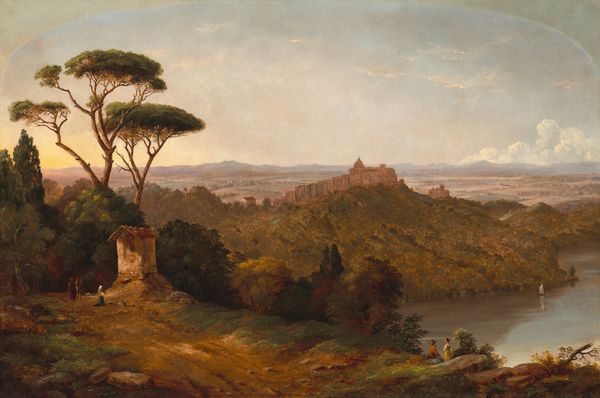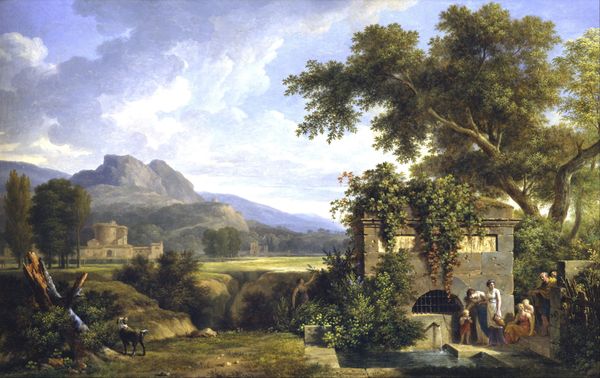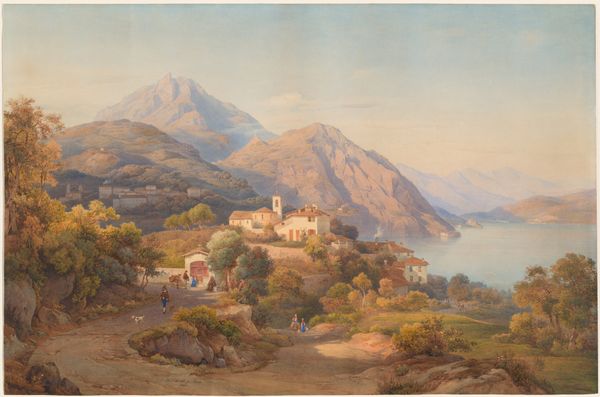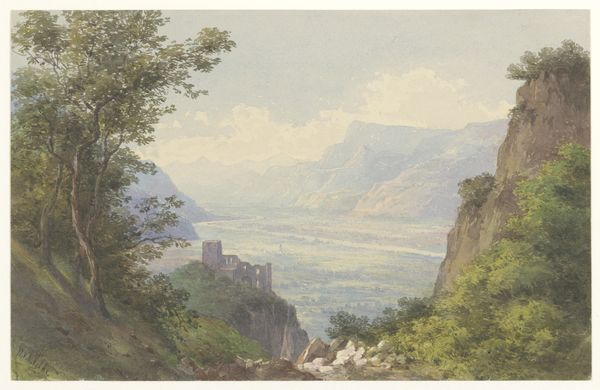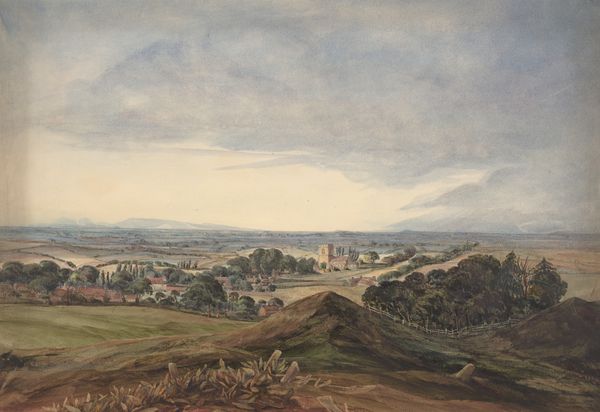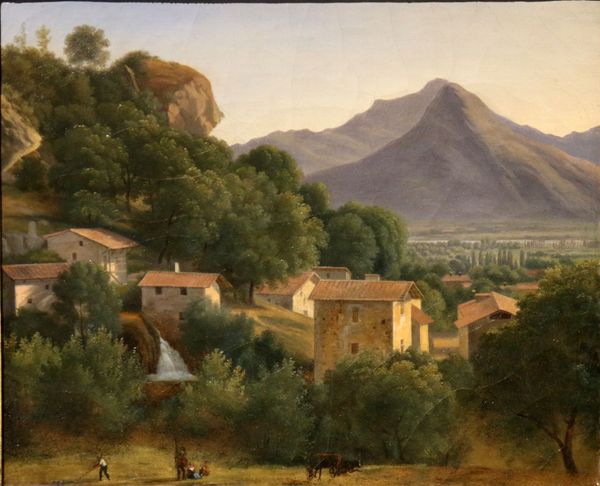
#
impressionist painting style
#
landscape
#
impressionist landscape
#
possibly oil pastel
#
oil painting
#
underpainting
#
painting painterly
#
watercolour illustration
#
watercolor
#
warm toned green
#
environment sketch
Copyright: Public Domain: Artvee
Editor: So, this is "Blick über die Stadt Salzburg," a watercolor attributed to Edward Theodore Compton. The city seems nestled right into the landscape; it’s lovely. What strikes me is the soft texture and the hazy quality of the distant mountains. How should we interpret the cultural landscape? Curator: We could start by acknowledging that while it’s "attributed" to Compton, we don't have exact dates, which immediately begs questions about the materials. Look at the visible brushstrokes; how much are they indicative of the type of paper he was using? What kind of social framework let this become the landscape tradition? We might look at industrialization’s encroachment and how romantic landscape emerged. The paper production itself! And pigment availability! Consider it all against the burgeoning tourism industry of the time. What would they be seeking? What were they sold through prints? Editor: Tourism is definitely one thing that strikes me as it creates the demand for beautiful scenery and it could also highlight the difference between a romantic depiction and the actual impact of tourism on the environment. Curator: Exactly! Think of how materials impact access! Watercolors became popular due to their portability and the growing middle class having time and resources to travel and sketch. So who has the leisure and economic means? This seemingly idyllic scene, even in its hazy form, is a commodity and representation of certain societal factors that also speaks of the labor of Compton as an artist. Do we really see Salzburg here or just a representation filtered through capitalism? Editor: So by considering the production, materiality and societal components we get to a greater historical awareness of the scene! It's interesting how seemingly "light" work has such depth of cultural weight. Curator: Precisely. Considering all factors opens our minds to consider beyond surface-level consumption!
Comments
No comments
Be the first to comment and join the conversation on the ultimate creative platform.
